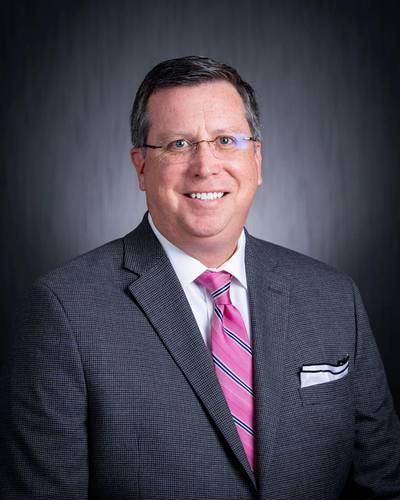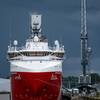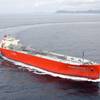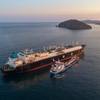Three Questions: Matt Tremblay, VP, Global Offshore Markets, ABS
The American Bureau of Shipping dominates the global market in the classification of Floating Production. Offshore Engineer recently sat with Matt Tremblay, ABS’ Vice President of Global Offshore Markets, at American Bureau of Shipping HQ in Houston for his insights on market drivers and technical trends in this dynamic market.
- Matt, big picture, how do you see the Floating Production market developing in the coming years?
At a macro level, I think we're going to be supply limited over the next five years. While there is a demand for increasing capacity, there is no capacity to [expand immediately] based on the supply chain of shipyards and equipment manufacturers. The other challenge is financing, as the cost of capital is significantly higher than it was during the last boom. Another thing that's challenging the capacity side of things is the activity in the marine market, as per square meter, a dry dock is going to make more money building six gas carriers [for example] than it will building one FPSO. The number of shipyards and EPC companies capable of handling the large FPSO projects is a small list.
- Can you put in perspective the importance of floating production to ABS as a whole?
The floating production market is the cornerstone of ABS’ leading position in the offshore side of classification. ABS classes almost 38% of the global offshore production fleet, more than 50% of [the fleet] in the Americas, where South America is the central focus of the world right now on offshore production. ABS is class more than 50% of that fleet in South America and 100% of the new activity in Guyana.
We have people all over the world that work on these projects, distributed through dozens of different offices. ABS is the only class society with a fully staffed, fully capable engineering office in Brazil, and we've got large engineering offices in Singapore, Shanghai and Houston that support the local clients in the offshore space and specifically the FPSO space. They have capabilities to do everything from your bread-and-butter work to high-end technical analysis, where we're [deploying] many PhDs and supercomputers. We set ourselves up that way to be able to make local decisions, support local customers, and make decisions quickly.
- What are the technology trends in the floating production sector that are challenging industry?
Broadly speaking, the technology trends are in three buckets:
• Energy Transition
• Digitalization, and
• Asset Integrity of Aging Fleet
Taking the last one first, in asset integrity the main challenge is aging assets. There's a lot of really old steel out there; it's been 40 years since their keel laying date for 25% of the FPSOs; it’s been more than 25 years since their keel laying date for 50% of the FPSO fleet.
A challenge with older FPSOs is getting all of the inspections done, as the hardest part of doing the inspection from an operator's perspective is cleaning the tank so you can get in and look at it. That, in turn, is impacting future design, and one of the design changes that's happening most recently is full double bottoms, where the framing of the structure is in the double bottom, not in the cargo tank. This gives you a smooth side and a smooth bottom; it actually looks almost like a gas carrier tank now. It's easier to clean because now you don't need a crew with shovels and five-gallon buckets shoveling the muck out of the bottom between the stiffeners.
Digitalization also comes back to asset integrity. The digitization and our understanding of the asset condition is allowing us to forecast maintenance needs, equipment failures, allowing us to use machine learning and AI tools to analyze that condition data and help us make better plans, more efficient plans, safer plans around the maintenance. So applying these new big data, AI-type tools to the maintenance and condition data, we're now able to track electronically and to build more efficient plans to maintain and operate these vessels more safely. We are trying to apply it in a number of ways to existing structures, but more so we're seeing it built into the new assets. A great example: there are strain gauges in the hull that measure the load that the hull is subjected to, allowing us to measure and calculate remaining fatigue life via sensors within the hull.
There's new R&D that we're doing on remote inspection technology, remote gauging technology, measuring the thickness of the remaining steel. We're working on a project with a national oil company where we're permanently installing sensors inside one of the tanks, then instead of having to get in and mechanically scan each of these locations, you just take the data off of these RFID tag stickers that tells you what the remaining thicknesses of the steel.
Last, but certainly not least, the biggest thing is change around sustainability and its impact on the design of FPSOs. The application of technologies like carbon capture to the power generation package, and a technology called combined cycle where you're using the heat from the power generation system as a heat source that you may need within the hydrocarbon production system, so you're not having to make this energy twice.
Also, we’re looking at how we’re actually powering the FPSO. The newest designs we're working with today are working toward electrification of the larger asset, and ideally someday that power’s coming from off the asset.
Traditionally, FPSOs use gas turbines as the main source of power, with a number of diesel engines that supply power loads across the asset. Those diesel engines are coming out and more high voltage power distribution is being used. From an efficiency perspective, from a CO2 emissions perspective, the bigger the engine is, the less CO2 it emits per kilowatt. So having five or six really big gas turbines versus three or four medium-sized gas turbines and a bunch of diesel engines is emitting less CO2 per kilowatt. One national oil company, for example, is forecasting a 20% reduction in CO2 emissions based on this new electrification project that they're working on … it’s not contracted yet, but it’s coming.
[Other interesting developments include developments around the use of renewable energy and alternative fuels to supplement power]. The Norwegians are doing some really good things right now, powering some of their offshore production assets from land. If you can operate a green thermo powerplant on land and then run that electricity out to the offshore production, all of the sudden you've got new oil with a zero CO2 cost to produce.












